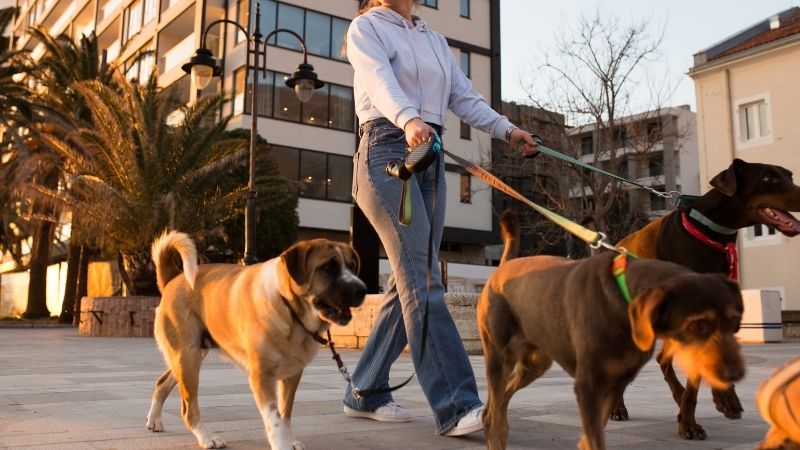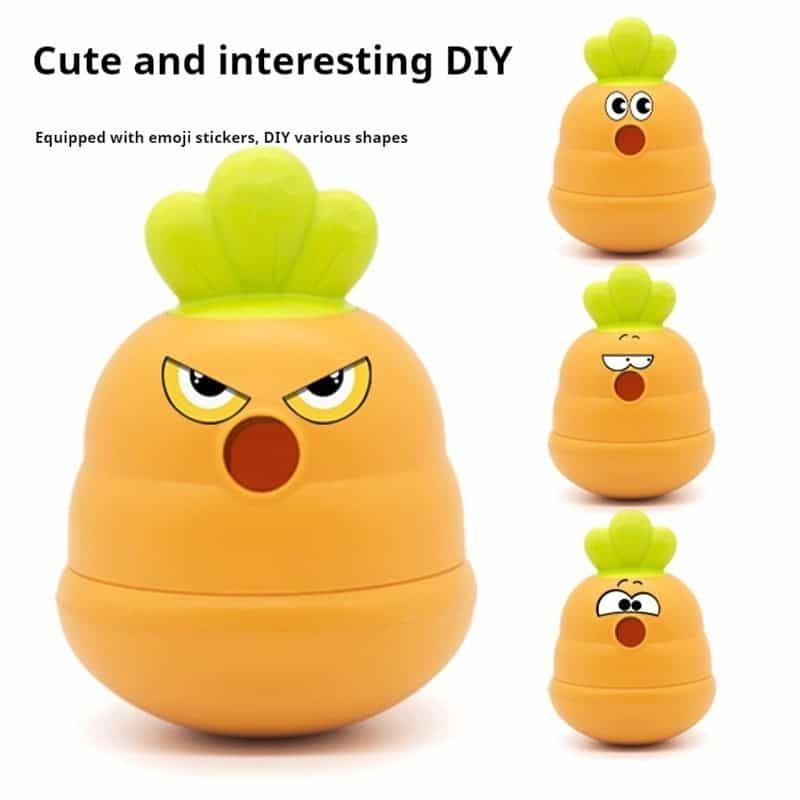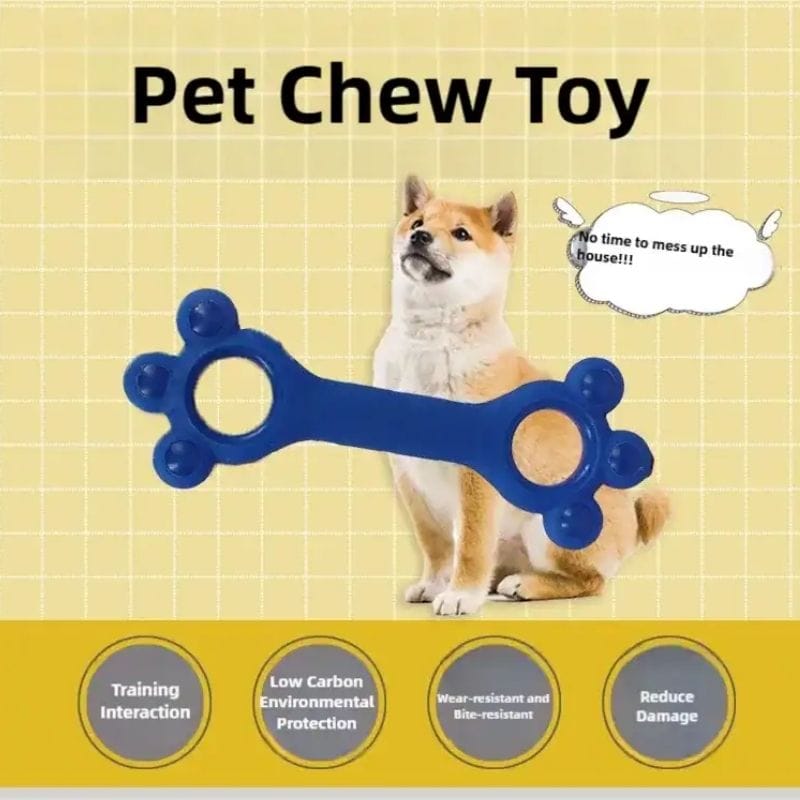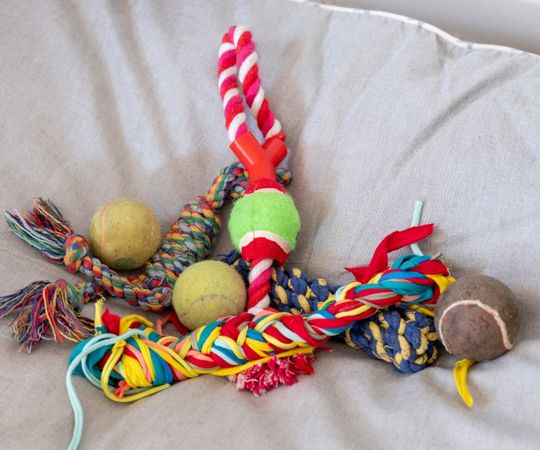Leaving your beloved pup home alone while you head to the office can be a significant source of guilt and anxiety for any pet owner. You picture them bored, lonely, or even anxious, counting the minutes until you return. But it doesn’t have to be this way. With the right preparation and routine, you can ensure your furry friend remains happy, safe, and content throughout the workday.
This guide provides eight essential, can’t-miss tips to transform your puppy’s alone time from a period of stress into an opportunity for rest and enrichment. By implementing these strategies, you’ll not only improve your dog’s well-being but also gain peace of mind.
8 Tips for Leaving Your Dog Alone While at Work
Keeping your dog happy and engaged during work hours is crucial. Here are eight effective strategies to ensure your furry friend remains content.
Designate a Secure Space
Instead of giving your dog free rein, create a specific, dog-proofed area for them. This could be a comfortable crate (if they are crate-trained) or a small room like a kitchen with baby gates. This space should contain their bed, fresh water, and safe toys. A secure den minimizes their anxiety and prevents them from engaging in destructive or potentially dangerous behaviors around the house.
It makes your puppy feel protected rather than punished. This consistent, safe haven is a cornerstone of teaching your dog to feel calm and secure when home alone.
Provide Mental Stimulation
Mental exercise can tire a dog more effectively than physical activity alone. To keep your pup engaged, leave interactive puzzle toys, treat-dispensing feeders, and long-lasting chews to keep their brain engaged. Rotate puzzles and vary difficulty so your dog doesn’t lose interest. Consider scent games—hide kibble in different containers—or frozen enrichment treats that take time to finish.
Mental stimulation reduces boredom-related behaviors like barking and chewing and helps your dog remain calm while alone. Pair these activities with a brief walk before you leave, so your dog is already relaxed; a mentally and physically tired dog is more likely to rest during your workday.
Hire a Dog Walker or Daycare

For social, energetic dogs, a midday break is a game-changer. Hiring a dog walker to take your dog out for a potty break and a quick game of fetch can break up a long day.
Alternatively, a dog-friendly daycare provides supervised play and interaction. This reduces loneliness and helps dogs burn off energy.
Before committing to either option, it’s crucial to do your research. For a dog walker, seek verified reviews, ensure they are bonded and insured, and arrange a meet-and-greet to see how they interact with your pet. For a daycare, visit the facility in person to check staff-to-dog ratios, observe cleanliness, and ask about vaccination policies and safety protocols. Trial days let you assess how your dog adjusts. Note temperament—some dogs thrive in group play, while others find it stressful.
Use a Pet Camera for Insight
How does your dog really spend their day? A pet camera removes the guesswork and provides valuable insight. Modern cameras allow dog owners to talk to their pets, dispense treats remotely, and monitor their behavior in real-time. This helps you distinguish between a dog that sleeps all day and one that exhibits signs of distress like pacing or whining. This data is crucial for addressing potential separation anxiety and tailoring your approach.
The ability to check in and offer a comforting voice can ease your mind and your dog’s loneliness.
Play Music or TV
Play calming music or leave the TV on to provide background noise. Studies show that certain types of music can lower anxiety levels in dogs at home alone. Choose playlists or stations designed for dogs—calm classical music, soft ambient sounds, or tailored pet channels. Some dogs respond well to nature sounds or audiobooks with a steady, neutral voice.
Keep volume at a low, comfortable level and test different types to see which relaxes your dog most. If your dog reacts positively, make the audio part of the departure routine to signal it’s safe to settle.
Avoid startling or high-energy programs; the goal is steady, predictable background noise that promotes relaxation and reduces reactivity.
Address Separation Anxiety
If your dog shows extreme distress—persistent barking, destructive behavior, elimination, or panic—separation anxiety may be the cause. Start by leaving your dog alone for short periods, gradually increasing the duration. Reward calm behavior to reinforce positive associations with your absence.
Work with a certified trainer or veterinary behaviorist for structured plans. In some cases, medication prescribed by a veterinarian can ease severe anxiety while you train. Environmental changes (comfortable spaces, enrichment, and predictable routines) also help.
Early intervention improves outcomes; don’t wait until behaviors worsen.
Keep Departures Low-Key
How you leave matters more than you might think. Make departures calm and brief—avoid long goodbyes, dramatic displays of affection, or emotional reinforcement that signals anxiety. Instead, perform a short, neutral ritual: put on your coat, say a simple cue like “see you,” and leave calmly.
Practice short absences to gradually build your dog’s tolerance; return calmly as well to avoid creating a high-energy reunion that reinforces anxious behavior. Pair low-key departures with rewards for calm behavior—a chew toy or puzzle given just before you go—to help your dog associate your leaving with positive, manageable experiences rather than distress.
Return with Love
When you return home, make your reunion a positive and loving experience, but avoid over-the-top excitement immediately. Greet your dog calmly first, allowing them to settle. Once they’ve calmed down, engage in some quality one-on-one time. This could involve a walk, a play session, or just some relaxed petting and cuddles.
This reinforces the idea that your return is a happy event and that they are loved, strengthening your bond and making the time they spend alone more tolerable in anticipation of your loving return.
How Long Can You Leave Your Dog Home Alone?
The duration you can leave a dog alone at home varies based on age, dog breed, and temperament.
The most significant determining factor is age:
- Puppies, with their boundless energy and developing bladders, should not be left alone for more than two to four hours at a time. They require frequent potty breaks, socialization, and consistent training.
- Conversely, a healthy adult dog can typically manage being alone for six to eight hours, which often aligns with a standard workday.
- However, senior dogs re-enter a category requiring more attention; they may need more frequent bathroom breaks due to medical conditions like arthritis or declining kidney function.
Beyond age, a dog’s breed and personality are excellent indicators of how they will cope.
- High-energy working breeds like Border Collies or Labrador Retrievers, and breeds prone to separation anxiety like German Shepherds or Vizslas, may struggle with extended solitude.
- Conversely, some more independent breeds, like the Chow Chow or Shiba Inu, may handle longer periods more calmly.
Monitoring your dog’s behavior during long periods alone can provide insight. If signs of anxiety or distress appear, reevaluate your schedule and consider employing dog walkers or daycare services.
Reliable Mental Stimulation Toys from HEOU
1. Interactive Puzzle Toy

- Remote-Control Model & Automatic Mode: Easily switch between remote-control and automatic modes to suit your dog’s play style.
- Irregular Jumping & Obstacle Avoidance: Irregular jumping and obstacle avoidance capabilities add an extra layer of excitement and challenge to playtime.
- Bouncing Ball Design: The toy’s bouncing ball shape is irresistible to pets, encouraging them to bat, chase, and play with it.
- USB Rechargeable: Say goodbye to constantly replacing batteries. The Smart Cat Toy is USB rechargeable, making it convenient and cost-effective to keep it powered up and ready for action.
- Material Safety: Made from thickened and anti-drop materials, this toy is built to last. The high-quality construction ensures that it can withstand rough play and accidental drops.
- Custom Logo Available: Want to add a personal touch to your toy? We offer custom logo options, allowing you to create a unique and branded product.
2. Treat-Dispensing Feeder

Key Features:
- Chew-Resistant & Tough – Made of TPR+ABS material, this toy withstands aggressive chewing and accidental drops, keeping edges smooth and safe for your pup.
- DIY Emoji Stickers – Personalize your dog’s toy with fun expressions, adding extra engagement and novelty.
- Leaf-Shaped Top – The playful carrot-inspired design with a leafy cover sparks curiosity and keeps dogs entertained for hours.
- Pet-Safe Design – Rounded edges and a scratch-free surface protect gums and teeth, making it ideal for teething puppies or energetic chewers.
3. Long-Lasting Chew

Key Features:
- Paw-Shaped for Comfort: Designed in the familiar shape of a paw, this toy fits comfortably in your dog’s mouth, making it easy to chew and play with. It helps grind down teeth safely, reducing the urge to chew on your belongings and preventing destructive behavior.
- Built to Last: Crafted for even the most powerful chewers, this toy is exceptionally tough and durable. Its robust construction is engineered to withstand intense, prolonged chewing sessions, providing long-lasting value and entertainment.
- Safe & Eco-Conscious Materials: Made from a combination of TPR, nylon, and wood plastic, this toy is both safe and environmentally friendly. The durable construction ensures it can withstand intense chewing sessions.
- Eye-Catching Color Options: Available in multiple vibrant colors, this toy not only looks great but also adds a touch of fun to your dog’s playtime. With a variety of colors to choose from, you’re sure to find the perfect match for your furry friend.
- Ideal Proportions: Measuring 32 cm in length and 12 cm in width, and weighing 233g, this toy is the ideal size for medium to large dogs. It’s lightweight yet sturdy, making it easy for dogs to carry around and play with.
Frequently Asked Questions
How can I take care of my dog while at work?
To care for your dog while at work, set a routine and ensure they’re comfortable at home. You can provide your dog with toys for mental stimulation, hire a dog walker, or use doggy daycare for companionship and exercise.
What is the 7 7 7 rule for dogs?
The 7 7 7 rule refers to the number of hours dogs can be left alone based on their age. For every month of age, a dog can generally be left alone for one hour, up to a maximum of seven hours for adult dogs.
How do I keep my dog entertained while at work?
Keep your dog entertained by providing interactive toys, puzzle feeders, and rotating their toys regularly. Additionally, consider leaving a TV or calming music on to create a soothing environment.
Can a dog be left alone for 12 hours?
No, it’s not advisable to leave a dog alone for 12 hours. Most dogs need companionship, bathroom breaks, and mental stimulation every 6-8 hours, depending on age and breed.
How long can you leave your dog alone?
You can typically leave adult dogs alone for 6-8 hours. Puppies should only be left alone for 2-6 hours, depending on their age, and senior dogs may require more frequent breaks.
Conclusion
Finding the right solutions for your dog while you’re at work is essential for their happiness and well-being. By implementing strategies like hiring a dog walker or providing engaging toys, you can create a comfortable environment for your furry friend.
A responsible dog owner adjusts their work schedule where possible. If you have a flexible job, consider coming home for lunch or working from home some days. Even small adjustments can make a big difference in your dog’s routine and happiness.



